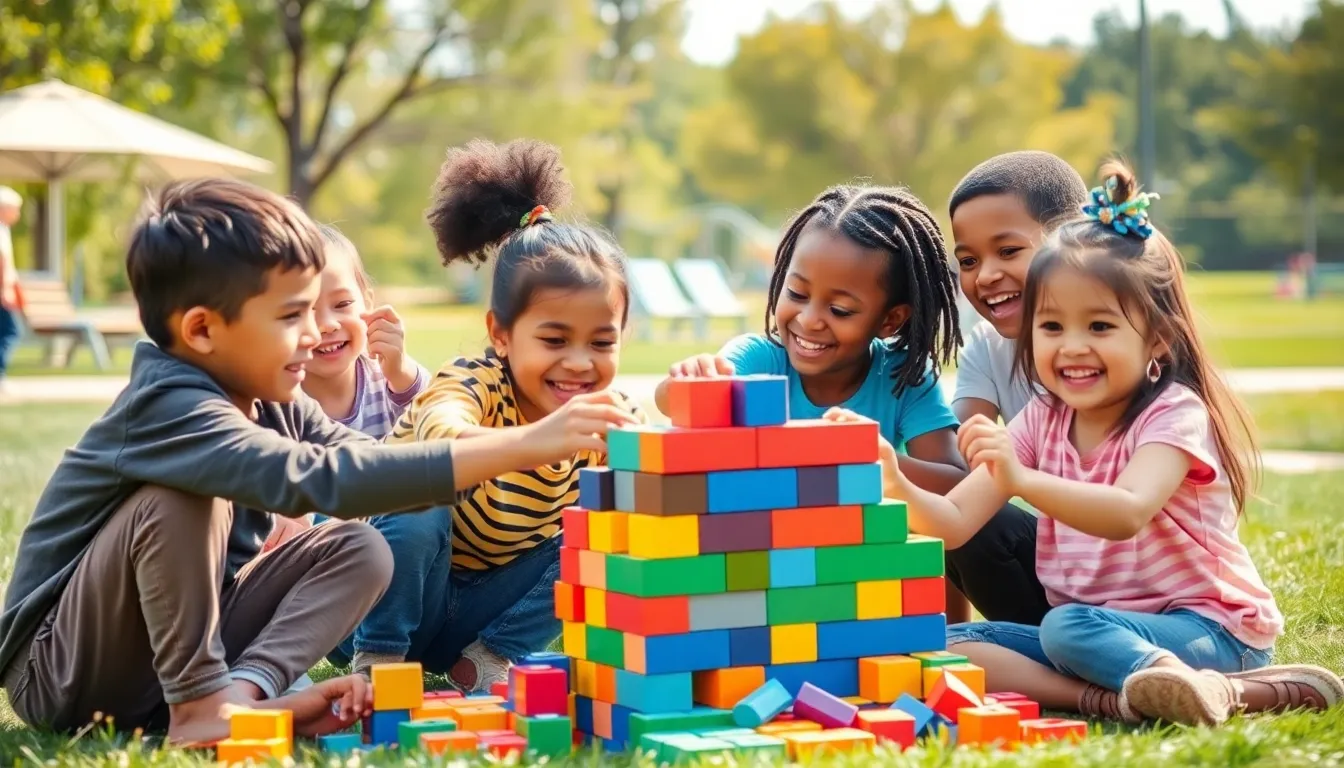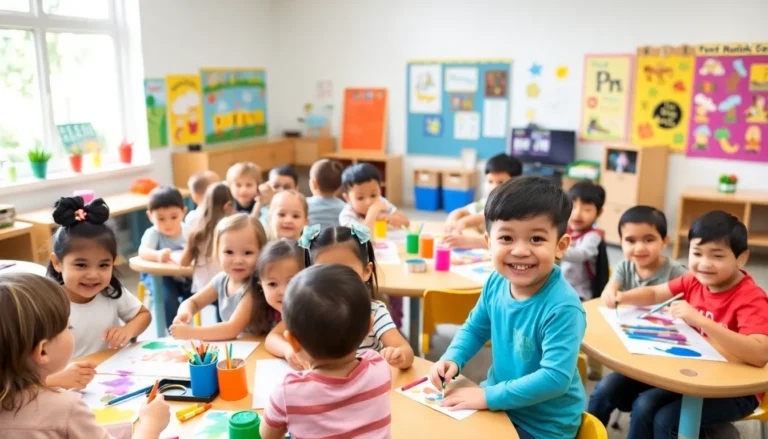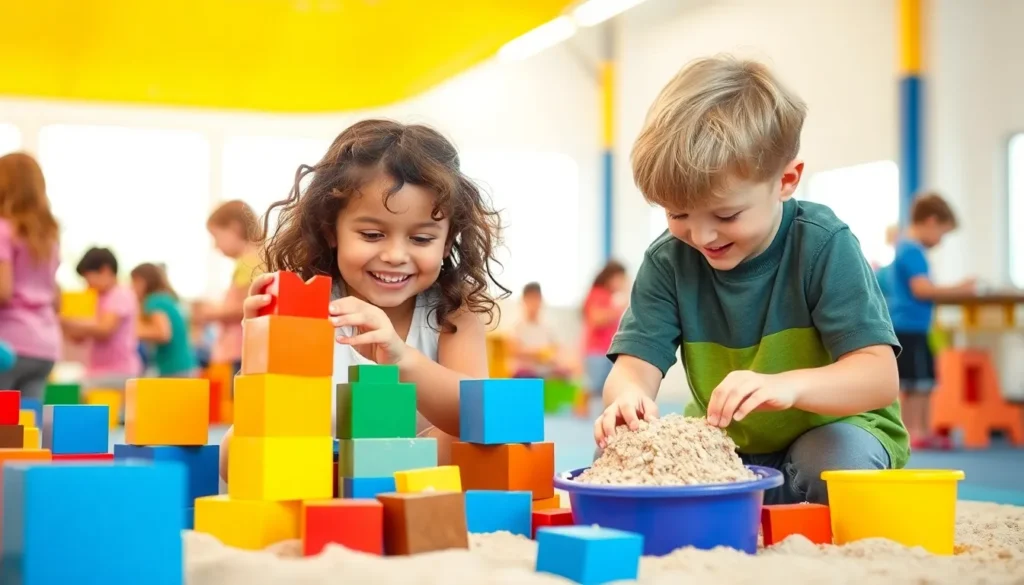Table of Contents
ToggleImagine a world where kids call the shots, and playtime is a delightful adventure instead of a structured lesson. Welcome to the magical realm of child-led play, where creativity flows like a river and imagination knows no bounds. Forget the rigid schedules and adult-driven activities; children thrive when they’re given the reins to their own fun.
Understanding Child-Led Play
Child-led play allows children to direct their own learning through engaging in activities that interest them. This form of play fosters creativity, independence, and problem-solving skills.
Definition and Key Characteristics
Child-led play refers to activities initiated and controlled by children. Autonomy stands as a hallmark of this approach, giving kids the freedom to choose their play, materials, and the direction of their narratives. Exploration, spontaneity, and self-discovery characterize this type of engagement, making it a world where children shape their experiences. Social interaction often blossoms during child-led play, facilitating cooperation and communication among peers. Importantly, caregivers provide support and context while avoiding interference, allowing children to maintain control over their playtime.
Importance in Child Development
Child-led play vastly contributes to overall child development. Social skills thrive as children learn to navigate relationships and negotiate roles within groups. Cognitive growth emerges through problem-solving as they encounter challenges and devise solutions. Emotional well-being improves as children express themselves freely and build confidence in their abilities. Physical skills also develop through active play, enhancing coordination and gross motor functions. Research consistently underscores the significant impact of this type of play on fostering resilience and creativity, crucial traits for lifelong learning.
Benefits of Child-Led Play

Child-led play offers numerous benefits that support overall child development. It fosters creativity and enhances imagination while also improving social skills.
Enhancing Creativity and Imagination
Child-led play dramatically boosts creativity. It allows kids to explore their ideas freely and invent stories or scenarios without limitations. Engaging in various activities, children combine different materials in innovative ways, leading to unique creations. Providing children with autonomy encourages them to think outside the box. When they direct their own playtime, kids often discover new interests that stimulate further creativity. Opportunities arise to experiment, take risks, and make choices, all vital components for imaginative development.
Building Social Skills and Relationships
Social skills flourish through child-led play. It encourages interactions among peers, helping children learn cooperation and negotiation. During spontaneous play, kids practice sharing, taking turns, and resolving conflicts. These experiences build a sense of community and belonging. Watching their peers navigate different roles enhances empathy and understanding. Relationships strengthen as children collaborate and support each other in play. Such interactions lay the foundation for effective communication skills, important for both personal and academic growth.
Strategies for Encouraging Child-Led Play
Encouraging child-led play requires intentional strategies that support children’s autonomy and creativity. Implementing these strategies creates an engaging environment for children to thrive.
Creating a Supportive Environment
A supportive environment promotes independence. Designing play spaces that are safe allows children to explore freely. Inviting open-ended materials encourages imaginative play. Comforting spaces with cushions or soft furniture help invite focus and creativity. Ensuring accessibility facilitates children’s ability to choose their activities. Positive adult interactions reinforce children’s confidence, supporting their ideas without imposing structure. By creating a supportive atmosphere, caregivers give children the freedom to express themselves.
Providing Appropriate Resources and Materials
Appropriate resources stimulate exploration. Offering diverse materials, such as building blocks, art supplies, and loose parts, invites creativity. Selecting open-ended toys encourages imaginative use, allowing children to shape their play experiences. Tools for constructing, such as paper, scissors, and tape, inspire innovative thinking. Presenting various books and storytelling materials promotes narrative development. Regularly rotating resources keeps play fresh and exciting, captivating children’s interests. By providing suitable materials, caregivers foster rich learning opportunities during child-led play.
Potential Challenges of Child-Led Play
Child-led play encourages creativity and independence but presents specific challenges. Adult involvement can sometimes complicate this approach.
Navigating Adult Involvement
Adults play a vital role in child-led play environments, but their presence can hinder children’s autonomy. While guidance is necessary, excessive interference disrupts natural exploration. Finding a balance between support and distraction is essential. Encouraging adults to ask open-ended questions instead of directing play fosters deeper engagement. Adults can observe, providing encouragement while allowing children to lead their activities. This fosters a sense of control and ownership over playtime.
Balancing Structure and Freedom
Finding the right mix of structure and freedom is crucial in child-led play. Too much structure can stifle creativity; too little can lead to chaos. Establishing clear guidelines helps create a safe environment where children can explore freely. Providing diverse resources encourages imaginative play while allowing for personal expression. Regularly assessing children’s needs ensures they receive adequate support without feeling restricted. Promoting this balance helps facilitate self-discovery and growth as children navigate their play experiences.
Child-led play is a transformative approach that empowers children to take charge of their learning experiences. By fostering an environment where creativity and exploration thrive, caregivers can support children’s natural curiosity and independence. This method not only enhances essential skills but also nurtures emotional well-being and social connections.
Encouraging child-led play requires a thoughtful balance of support and freedom. When adults step back and allow children to direct their play, they cultivate resilience and imaginative thinking. Ultimately, embracing child-led play leads to a richer, more fulfilling developmental journey, equipping children with the tools they need for lifelong success.







